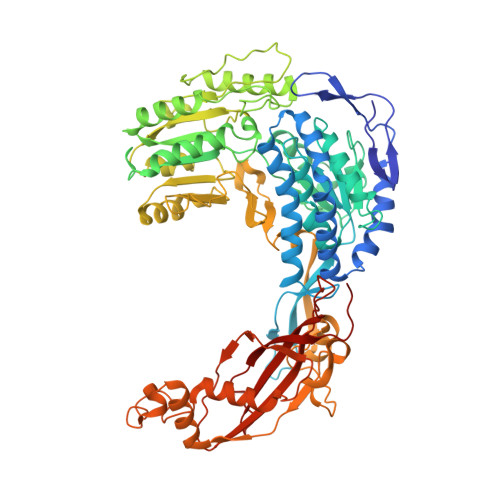Molecular basis for metabolite channeling in a ring opening enzyme of the phenylacetate degradation pathway.
Sathyanarayanan, N., Cannone, G., Gakhar, L., Katagihallimath, N., Sowdhamini, R., Ramaswamy, S., Vinothkumar, K.R.(2019) Nat Commun 10: 4127-4127
- PubMed: 31511507
- DOI: https://doi.org/10.1038/s41467-019-11931-1
- Primary Citation of Related Structures:
6JQL, 6JQM, 6JQN, 6JQO - PubMed Abstract:
Substrate channeling is a mechanism for the internal transfer of hydrophobic, unstable or toxic intermediates from the active site of one enzyme to another. Such transfer has previously been described to be mediated by a hydrophobic tunnel, the use of electrostatic highways or pivoting and by conformational changes. The enzyme PaaZ is used by many bacteria to degrade environmental pollutants. PaaZ is a bifunctional enzyme that catalyzes the ring opening of oxepin-CoA and converts it to 3-oxo-5,6-dehydrosuberyl-CoA. Here we report the structures of PaaZ determined by electron cryomicroscopy with and without bound ligands. The structures reveal that three domain-swapped dimers of the enzyme form a trilobed structure. A combination of small-angle X-ray scattering (SAXS), computational studies, mutagenesis and microbial growth experiments suggests that the key intermediate is transferred from one active site to the other by a mechanism of electrostatic pivoting of the CoA moiety, mediated by a set of conserved positively charged residues.
Organizational Affiliation:
Institute for Stem Cell Science and Regenerative Medicine, GKVK Campus, Bellary Road, Bangalore, India.
















